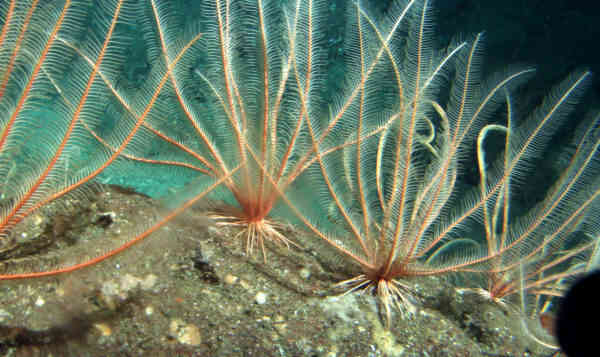Amazing creatures, crinoids look like plants, although in fact they belong to the animal world. Their unusual appearance always attracts the attention of divers, and it is not surprising – they really look like something alien. In fact, crinoids appeared on Earth long before many dinosaur species, and they are much, much older than mankind.
Interesting facts about crinoids
- 300-500 million years ago, there were more than 5 thousand species of crinoids in the world, but only about 700 of them have survived to this day. Moreover, over all the past eras, they have not changed much.
- Most of the species of sea lilies can move and float to the surface if they wish, but some of them lead a completely immobile lifestyle.
- They are rarely found in shallow water, preferring a depth of at least a dozen or two meters. And some crinoids even live at depths of up to 9.7 kilometers, while maintaining the monstrous pressure of the water column.
- From the point of view of zoology, their close relatives are sea urchins and stars (interesting facts about starfish).
- Like sea stars, the body of sea lilies is subject to 5-ray symmetry. In particular, they always have 5 arms, which, however, can be separated.
- The fossilized sea lilies are among the ten most commonly discovered fossil animals.
- In the tropical zone of the Pacific Ocean, sometimes crinoids of 40-50 different species live on a single reef.
- Another name for these animals is crinoids.
- All without exceptions, their species feed by passing sea water through themselves and filtering useful substances from it. Oysters eat about the same (interesting facts about oysters).
- Only 5 species of crinoids are found in Russian territorial waters.
- The mouth is located in the upper part of their bodies. Their stalked hands, covered with sticky claws, direct the nutrient particles floating in the water straight there.
- In ancient times, there were sea lilies, the stalks of which grew up to 15-20 meters in length.
- Despite for seeming tenderness, the outside of the body of these creatures is covered with an external skeleton.
- Some predatory mollusks willingly eat sea lilies, gnawing through the outer protection and getting to their soft flesh (interesting facts about mollusks).
- A number of species of sea lilies are able to walk on the seabed on their small legs.
